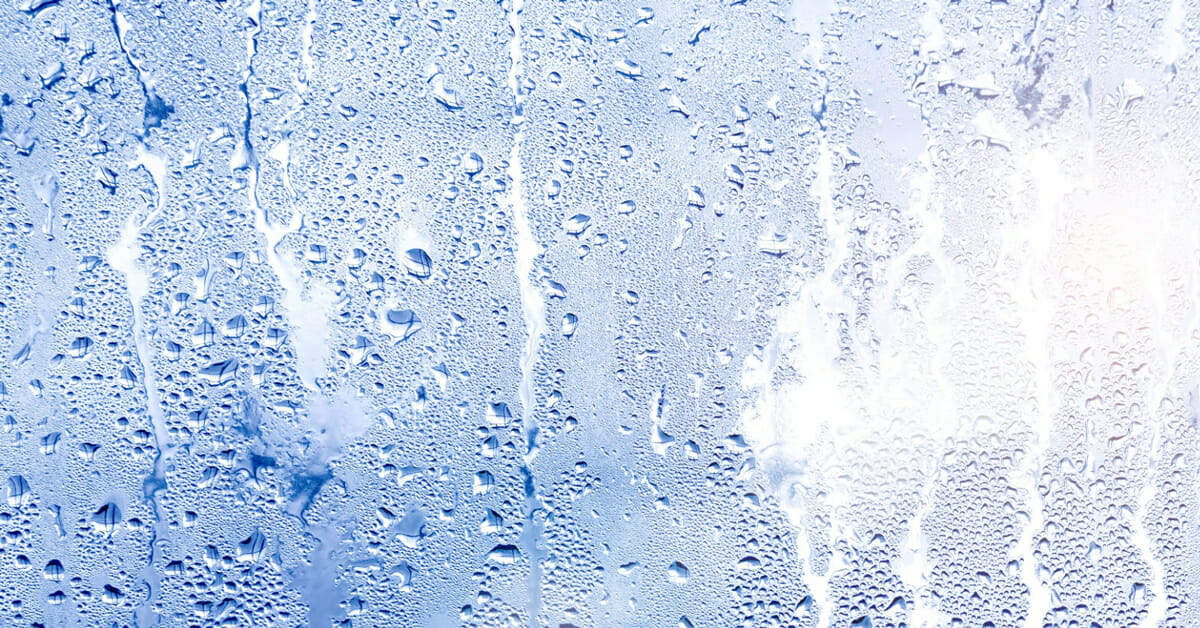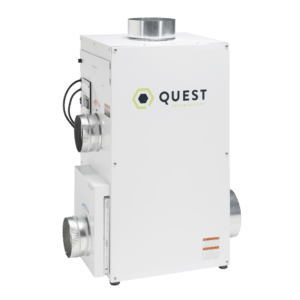How Ice Condensation and Ice Buildup Damage Cold Chain Products
The Problem is Excess Moisture
Condensation and ice buildup are both signs that the relative humidity in your cold chain facility is too high. But knowing what the problem is and understanding how to fix it are two very different things. If high moisture levels are damaging your cold chain products, it could mean that you need to add a new piece of equipment to the mix.
If you’re noticing ice buildup, mold, mildew, or liquid condensation, you could be dealing with excessive humidity in your cold chain facility. High relative humidity can wreak havoc on your stored products and on your cold chain equipment. We’ve seen firsthand damaged corrugated packaging, illegible labels, premature refrigeration system failure, slip hazards, door seal tearing, improper sealing, and compromised product.
Ice buildup on your surfaces? If you are noticing ice building up around vents, doors, on your evaporator, or even on cold-stored items, then excess water vapor in the air in the storage is the problem. Excess water vapor, while not visible, builds up on cold surfaces in the form of condensation and builds up as ice over time.

Changing the Temperature Isn’t the Solution
Commonly, lowering the temperature set-point of the cold chain facility or adding a space heater is offered as a solution to high moisture levels by keeping the coils running and collecting water. Here’s why that is a poor long-term strategy:
AS COIL TEMPERATURE DROPS, THE LIKELIHOOD OF FROZEN COILS INCREASES
The coil temperature and dewpoint are likely already lower than freezing which is only going to create ice build-up. It’s energy-intensive and hard on the compressor to continually defrost the coils when this happens plus it will take your cooling capacity offline. This may affect your room temperature and jeopardize product integrity.
RAISING THE TEMPERATURE ISN’T THE SOLUTION EITHER!
People will often put an electric resistance heater in the space, again in an attempt to keep the refrigeration coils running longer and pulling more water from the air. This creates a high energy load due to the heater and the double work the refrigeration system has to perform. This results in higher operational costs and premature failure of the refrigeration system.
The Solution is Desiccant Dehumidification
So if adjusting the temperature isn’t the right fix for condensation and ice buildup, what is? Adding a desiccant dehumidifier to your cold chain facility’s climate control system could be the solution you’ve been looking for. Desiccant dehumidification is the only way to pull water vapor from the air in a cold storage facility area with low dew points and the process is really very simple.
The desiccant dehumidifier pulls process air from the conditioned area, absorbs water vapor in the silica gel desiccant wheel, and a secondary air stream regenerates the wheel by sending the water vapor outside of the structure. That means that the damage caused by condensation and ice buildup – or high relative humidity – will no longer be a problem after you add a dehumidifier to the climate control system.
Learn More Now
Quest recommends our partner, NovelAire Technologies, for commercial desiccant dehumidifiers that can help you solve your cold chain condensation and ice problems.
Published on Feb 28 2019
Last Updated on Apr 11 2024
Categories: Cold Chain, Commercial Dehumidifier, Desiccants, HVAC Systems
Tags: cold storage, condensaation, humidity, ice buildup, Ice condensation, moisture


